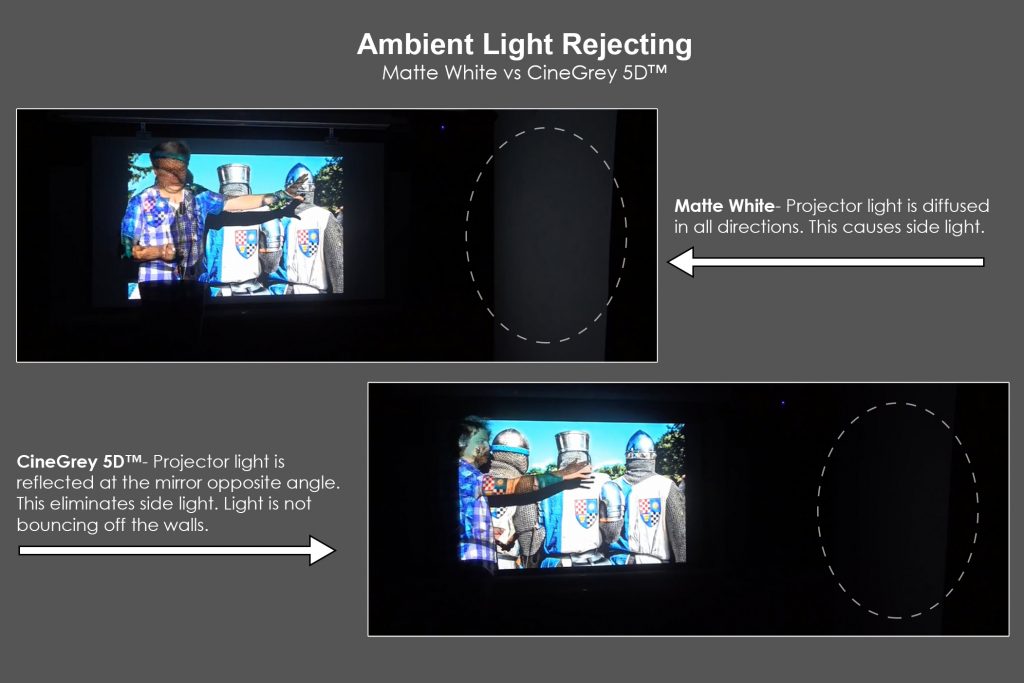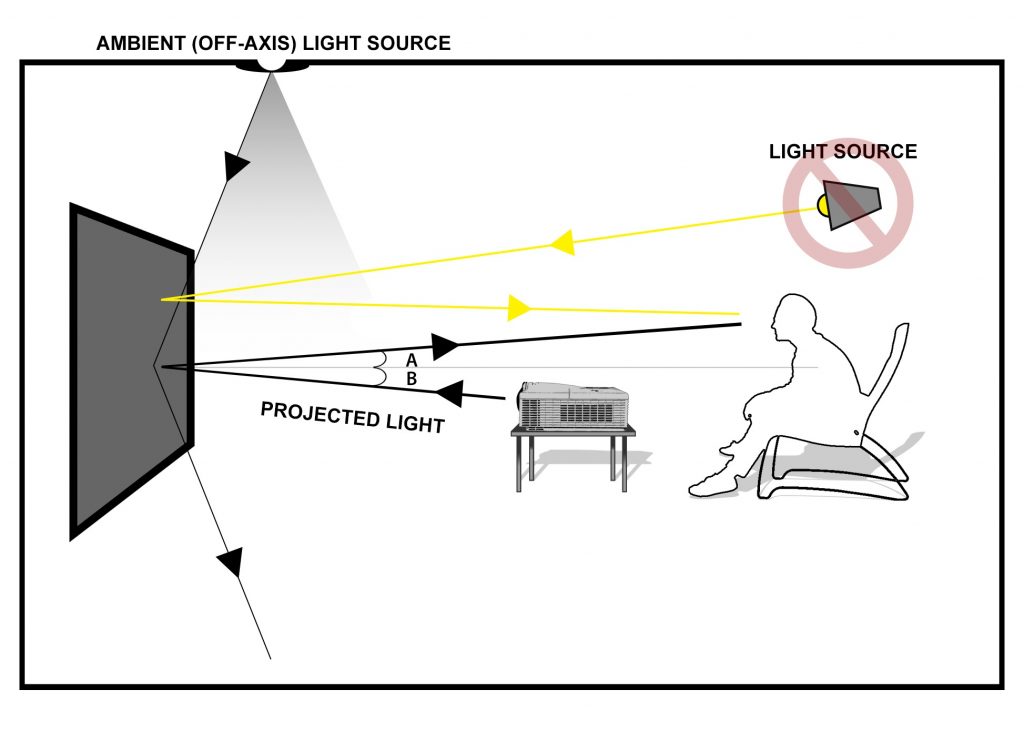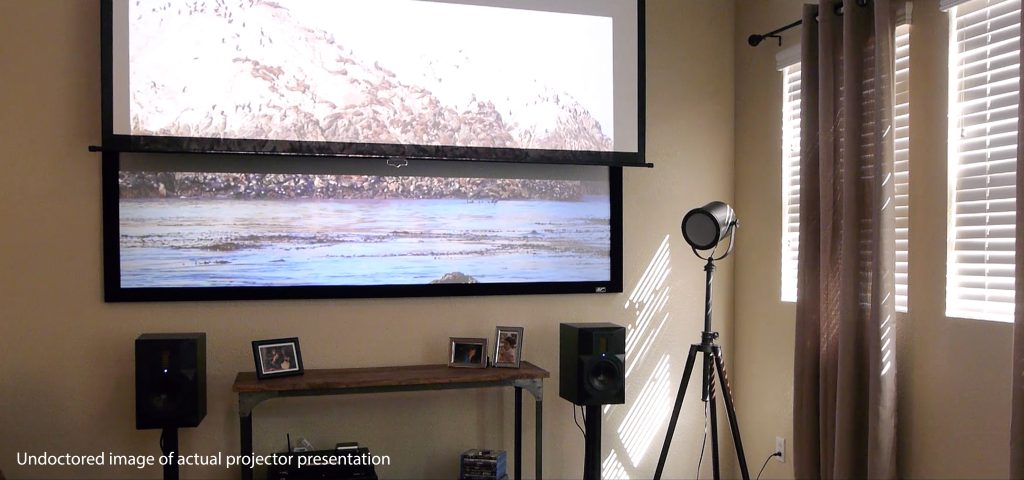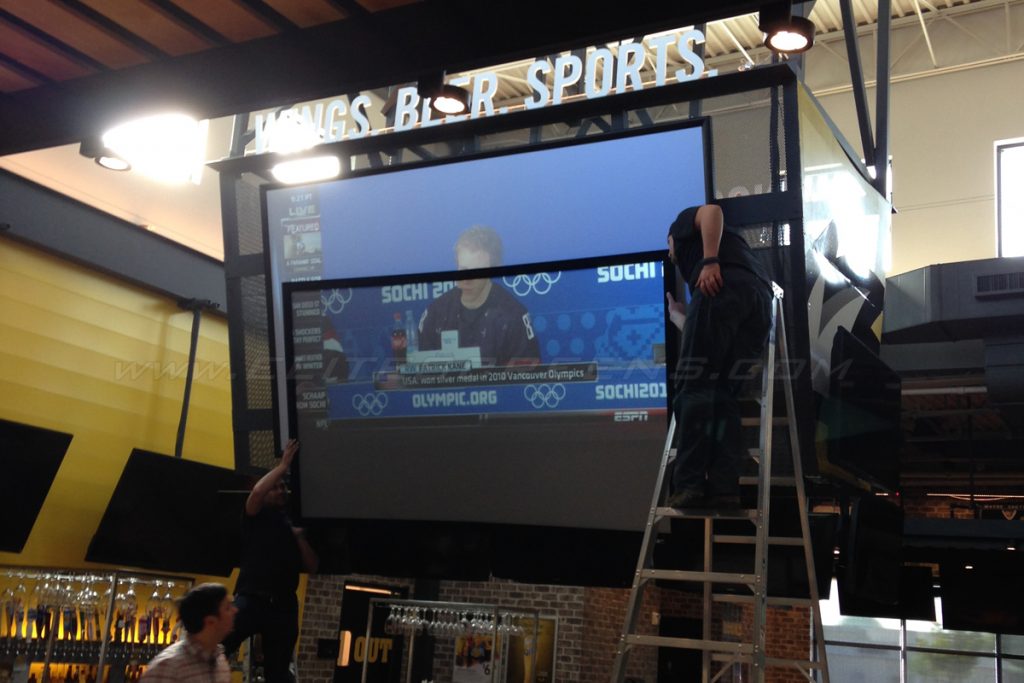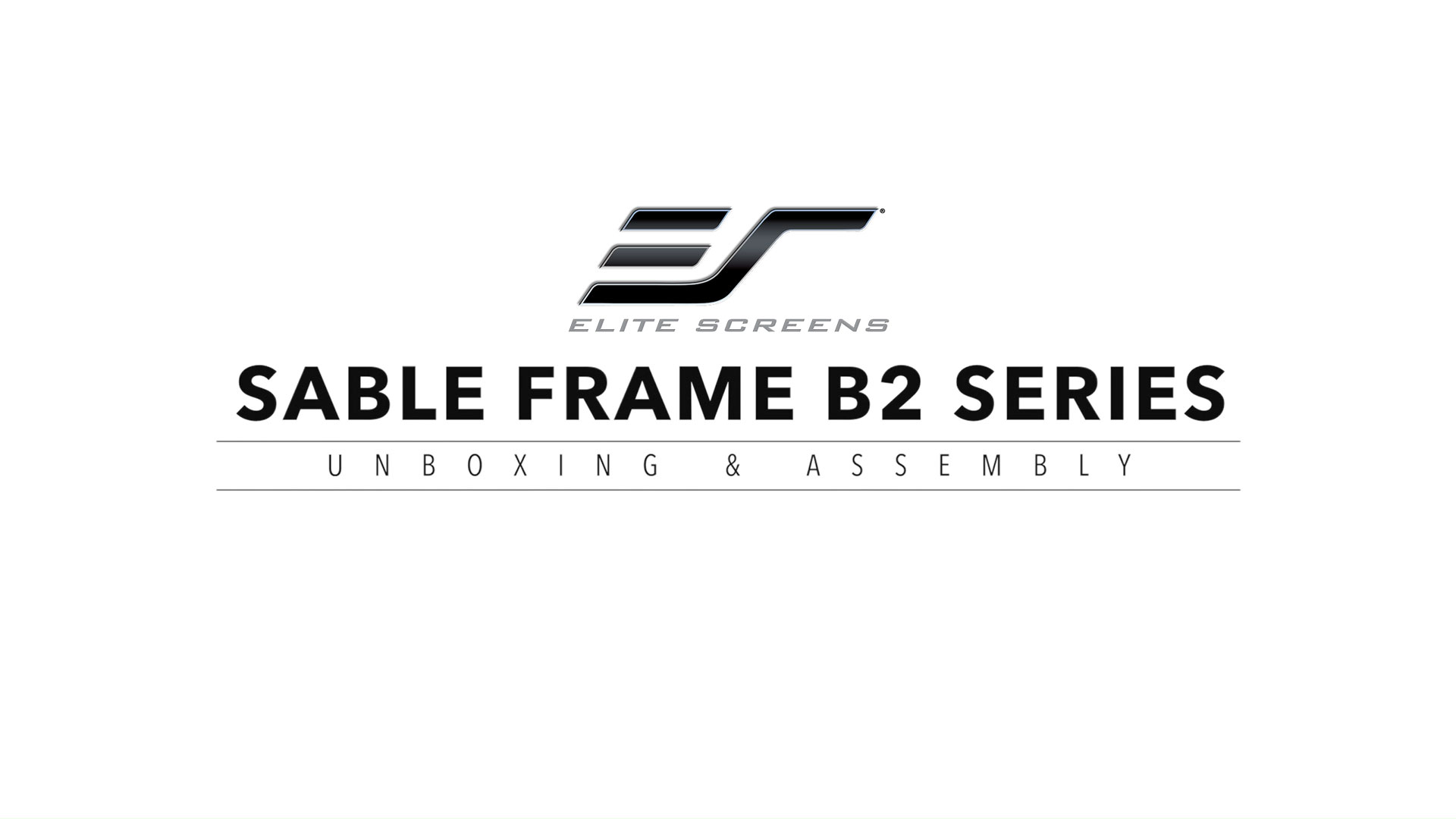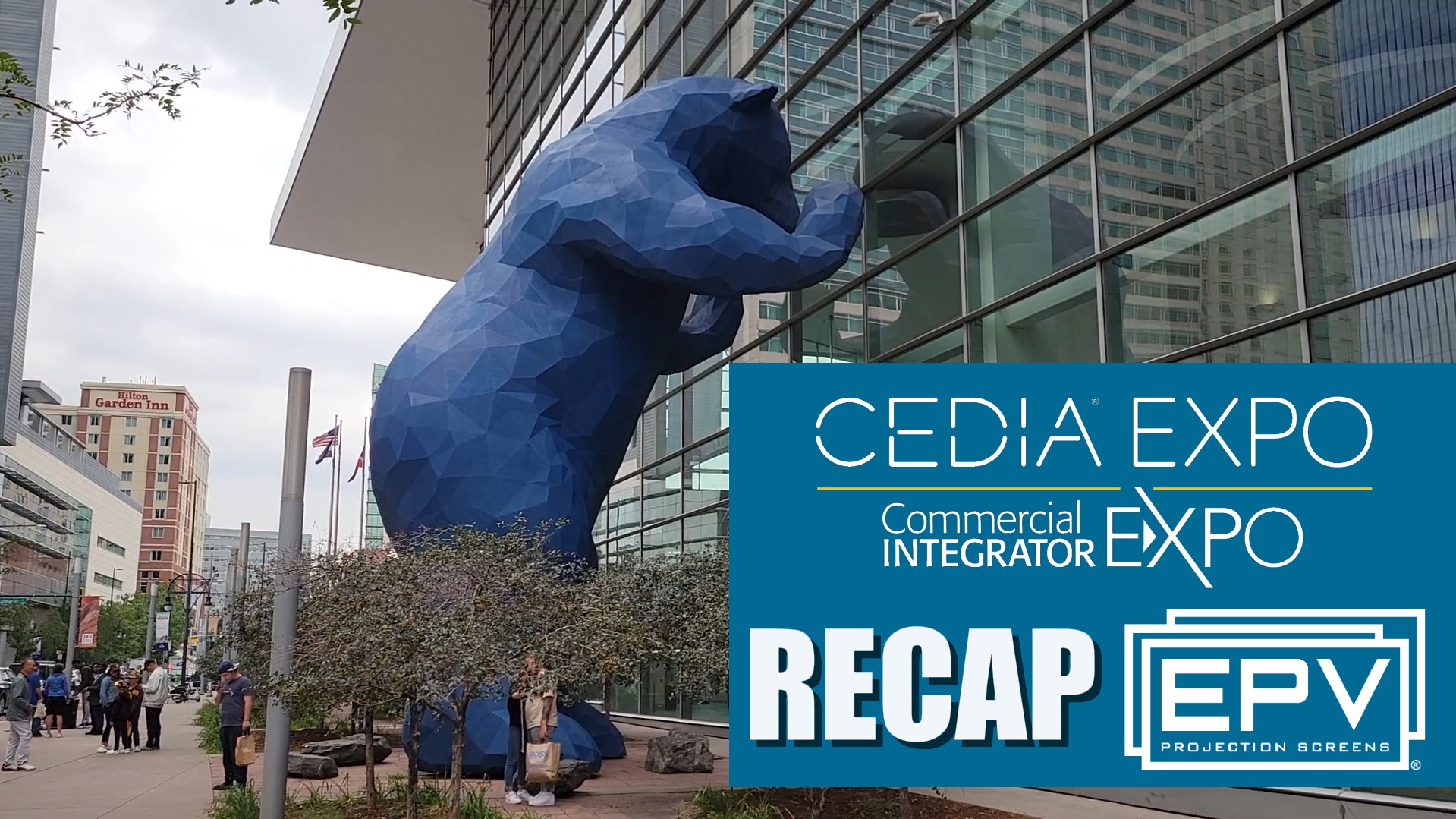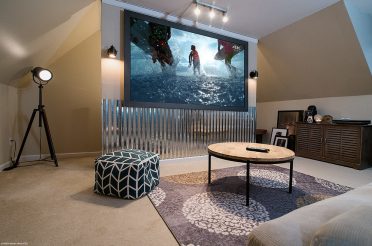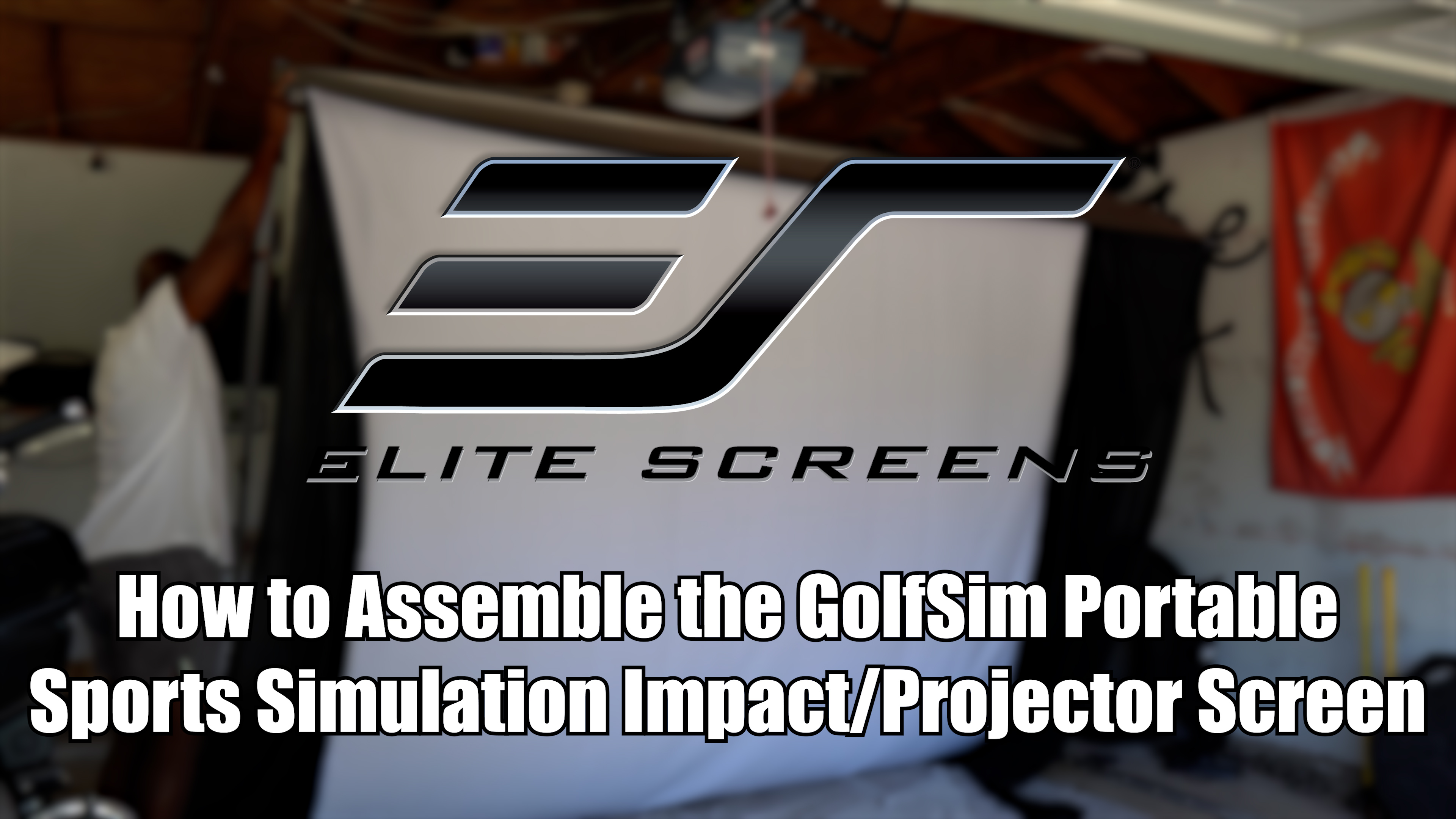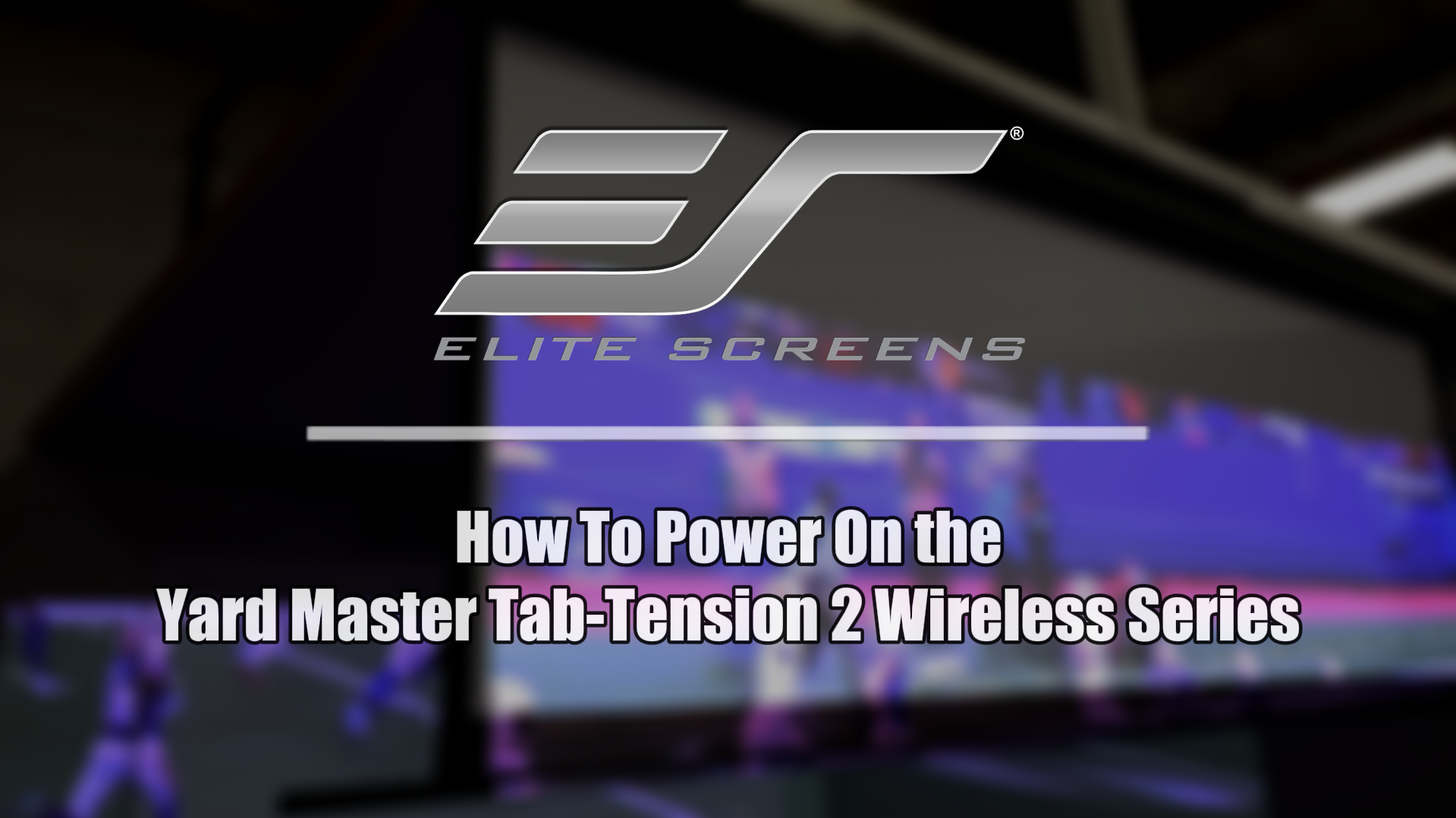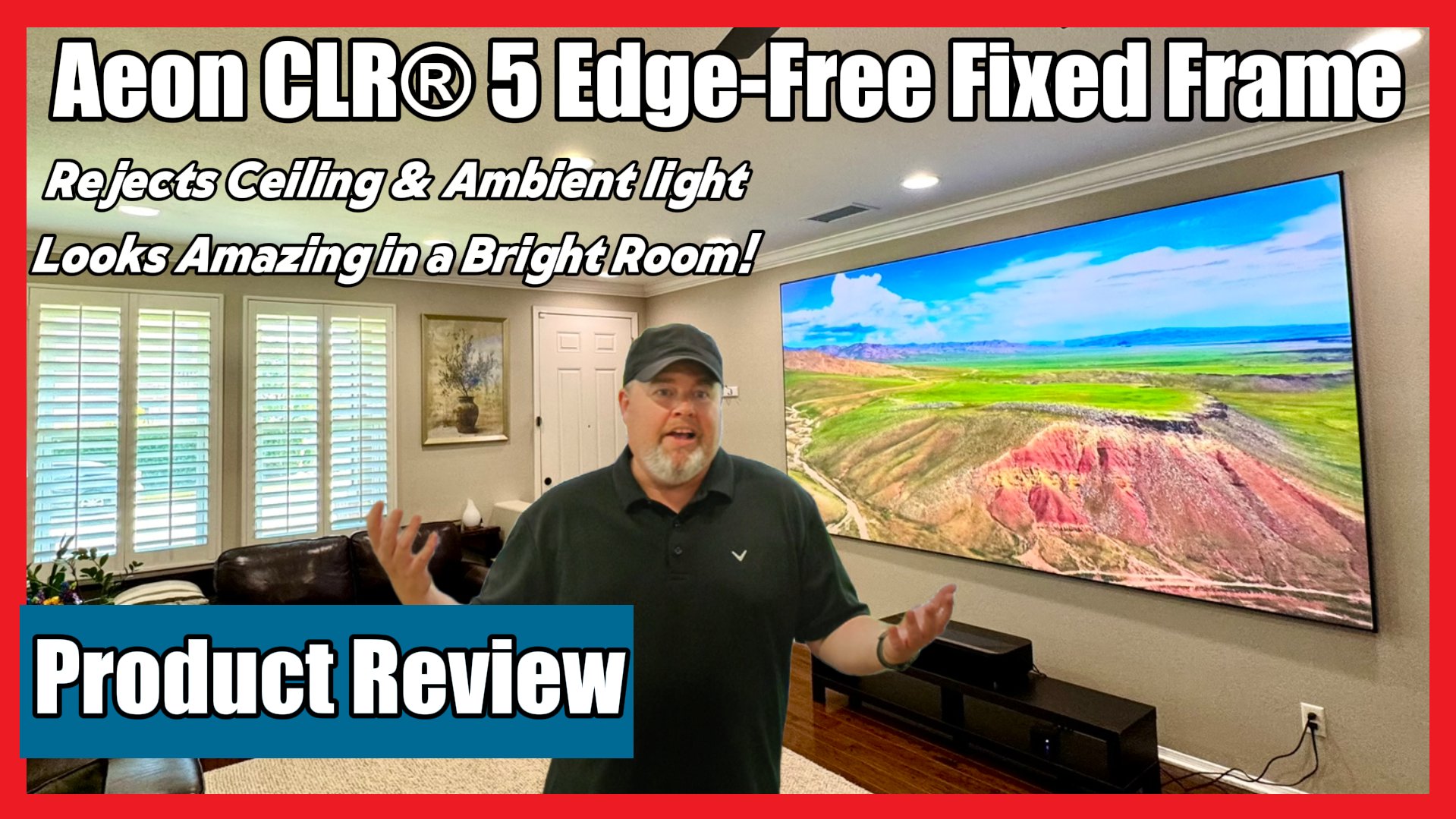A: Ambient light rejecting is a generic term for a variety of materials that prevents projected content from being washed out by incident room lighting from either natural or manmade sources. Each of these materials incorporate some sort of reflective microstructures that allows for projected light to create a superb image while off-axis light is either absorbed or reflected away from the viewers field of vision.
ALR screen materials are typically made for standard “long-throw” projectors. As long as the projector and material are aligned in accordance with SMPTE standards, you will get optimal picture brightness, color-contrast, and black level dynamic range while off-axis light is essentially rejected. We have created videos and articles on proper video and seating alignment to achieve the proverbial “sweet spot” for picture performance. Because Short-throw and UST projectors spread out their light signal over a comparatively short distance, much of the light is off-axis and will therefore be rejected by the material.
Materials like our Starbright CLR® are specifically designed for UST projectors. Their reflective microstructures are aligned to reflect the upward spread light signal from UST projectors into a viewer’s field of vision. At the same time, the “CLR®” rejects other forms of off-axis light such as regular room lighting, window light, ceiling light or even the direct signal from a standard throw projector.
A: Ceiling mounted UST projectors will not even work with a Starbright CLR® material because the material is specifically orientated to reject “ceiling light” or any type of lighting from above. This means that the screen will reject any overhead light, even from a compatible projector. Theoretically, you could invert the Starbright CLR® material to match with an inverted UST projector but the alignment will still not likely align properly with the human eye to deliver the ideal “sweet-spot” picture performance.
A: Matte grey was an earlier effort by projection screen manufacturers to enhance projector performance when projectors had limited performance ranges in need of a little help. Matte grey materials added a darker shade to projected images that would enhance black levels to a degree. The down side is that a projector with a high lumens output and interior light control was required. The next generation materials we offer now are CineGrey 3D / CineGrey 5D. The CineGray materials are ambient light rejecting. This means that the new materials will give you flat panel display brightness even with high levels of interior lighting. The old matte grey materials are washed out by interior lighting. Also, the Cinegrey series of ALR and ceiling light rejecting (CLR) screen materials give reference grade quality that is world class certified by the Imaging Science Foundation (ISF) for its professional grade abilities to provide accurate color rendition, contrast, and black/white dynamic range. The CineGrey 3D® has a wider diffusion range while the CineGrey 5D® is brighter. Comparing either CineGrey 3D/5D materials to the old matte grey is like comparing a couple of souped-up Ford Mustangs to a Model T.
A: Our CineWhite® material is an excellent screen material that is highly recommended when you have either a really high output (+3000 lumens projector) and/or are able to control the light in your media room (i.e. a dedicated home theater). However, under conditions when a lower output projector, uncontrolled ambient light, or light colored walls and/or ceiling, the CineGrey 5D® has four key features that result in a better overall viewing experience.
- The CineGrey 5D® material has an ambient light rejecting surface. The material has an angular reflective material that incorporates a diffusion layer over a highly reflective surface. This causes direct light from the projector to reflect squarely into the viewer’s field of vision while the outer contrast layer enhances image quality while absorbing indirect ambient light.
- The CineGrey 5D® contains elements of a silver screen despite its dark appearance. These both work to enhance the contrast ratio and color reproduction in either a well lit or a dark room. With most standard white materials, the image will become washed out when ambient light is present. The ambient light reflecting properties allow the CineGrey 5D® to maintain the image quality even under conditions where there is a high amount of light. In light controlled rooms, there are still certain reflective surfaces that may interact with the projected image such as the colors of the walls/ceiling. The grey/silver properties of the CineGrey 5D® reduce the impact the reflective surfaces, such as light colored walls and ceiling, have on the screen image. Although a white surface is recommended in completely controlled designs, the difference in grayscale between the CineGrey 5D® and CineWhite® surfaces are so slight that they may not be noticeable to most human eyes.
- The CineGrey 5D® is a 1.5 gain screen material that improves the image quality when active 3D projectors are used. There is approximately 50% loss of brightness when 3D is activated and there is even more brightness (aka lumens) being lost when the tinted shutter glasses are worn. The 1.5 gain of the CineGrey 5D® reflects the image at 1.5 times the original brightness of magnesium carbonate which is the standard industry control for creating a 1.0 gain white projection screen.
- The CineGrey 5D® is also a polarized material that allows for true 1080P 3D content when using a passive 3D projection system (i.e. dual projectors with an AFlex5D passive 3D video processor). The CineWhite® material is not polarized and thus the only 3D content that can be displayed on that surface must be from an Active 3D projector. In general, passive 3D is easier on the eyes as the viewer is able to see the image with both eyes at the same time rather than the left/right split that occurs during Active 3D.
A: Elite Screens CineGrey 5D® is a color neutral smooth surface with sparkling elements to increase screen gain in an ambient light room environment. These special characteristics incorporates a diffusion layer over a highly reflective surface which scatters ambient light while improving picture performance with a brighter image.
The projector itself, however also plays a big part in creating a hot spot. Projectors highest brightness levels are focused in the center, and only about 70% to 80% in the corners. In other words, the uniformity itself is not spread entirely even across the screen, thus creating a brighter spot in the center area.
To combat this, we recommend the following.
- Reduce the projector’s light output by choosing an economy mode
- Install the projector further away from the screen, minimum of 1.5 x the image width
- Go with a lower gain screen
A: Although matte white materials such as CineWhite® are ideal for environments where room lighting can be controlled, the image is easily washed out by ambient light. Ambient Light Rejecting (ALR) materials such as the CineGrey 5D® are suitable for environments where there are high levels of indirect (ambient) light. This material trades off on the wide diffusion uniformity of white materials in favor of a brighter (angular reflective) image. Elite’s CineGrey 5D® incorporates a diffusion layer over a highly reflective surface which scatters ambient light while improving picture performance with a brighter image. This includes color neutrality with enhanced black levels and improvement over Active 3D presentations.
Andrew Robinson, an industry expert, shared his thoughts with Elite Screens about the performance of the CineGrey 5D® ALR material, “…of all the features, the one that gets me and really speaks the most is the fact that the CineGrey 5D® material from Elite Screens is the most cost effective ambient light solution on the market today. This is why I use it and this is why I recommend that you check it out for yourself. Because, at the end of the day, we all want performance but we also want incredible value and these are two things that the CineGrey 5D® delivers in spades.”
Andrew Robinson’s endorsement of the CineGrey 5D®
A: For a complete side-by-side comparison, please Click Here.
A: The ambient light rejecting properties of the CineGrey 3D®/5D® make the materials incompatible with short throw and ultra-short throw projectors. The recommended minimum projector throw distance for these materials is 1.5 times the viewing image width. There are two main reasons behind this:
- The CineGrey 3D®/5D® are high gain and angular reflective screen materials. These types of materials require proper projector and screen alignment as hot-spotting may occur if not set up correctly.
- Due to the CineGrey 3D®/5D® materials being angular reflective, the angle of incidence from short-throw and ultra short-throw will be too close to the material and the viewer will not experience the optimal projector/screen performance. The material will treat the projector’s light as ambient light and thus it will reflect it in the wrong direction.
A: In addition to the sticker labeled “Back Side” placed along the edge of the material, the backside will be slightly shinier and has material folded outward.
A: The CineGrey 5D® and CineGrey 3D® is great for dark room environment also, but we must understand its limitations.
First of all, both materials have narrow viewing angles. So if you wish to have a wide seating arrangement after 80 degrees, you will notice a drop in brightness.
Second, because they are higher gain screens they reflect more projector brightness. This may tire your eyes, so we recommend using a less brighter mode if your projector has a such setting.
If that is not a problem, then these materials will work. And the best thing is, because they are angular reflective material, the projector’s light will not diffuse in all directions like a matte white material. Meaning that they will not scatter the projector’s light and create side lighting. Thus, eliminating the need to absorb it with black velvet or paint a room really dark.
Third, because both of these materials are made with a neutral gray substrate, the color balance and temperature will be exceptional. The dark gray also enhances contrast and great color saturation.
- *Disclaimer: As great as ambient light rejecting screen technologies are, there are still certain laws of physics that define what should and should not be done with a specialty material such as this.
- Main Answer: Ambient Light Rejecting (ALR) projector screens are specially formatted to reject the majority of off-axis lighting from the top, bottom, and side angles.
However if a strong light source is hitting the ALR material at roughly the same angle as the projector does, it will wash out the image.
There is an easy solution. I strongly recommend light blocking curtains or blackout shades to shield your room and to rely on the interior lighting that ALR screens work with.
A: A brighter projector (higher lumens) will help with image brightness but it does not help with color contrast or black levels. Since the projected image performance is important here, a contrast-enhancing material such as CineGrey 5D® is essential. White materials will reflect all of the light in the room; the projected light, indoor lighting, and sunlight through windows and doorways, everything. Because of this, the ambient lighting will still spoil image performance even with a bright projector. Ambient light rejecting (ALR) screens such as CineGrey 5D® filter out indirect light allowing your projected image to be what your audience will see instead of the extra glare. In addition to that, the screen’s filter layers enhance black levels and color contrast. This means that shadows, textures and slight variations in color shading in the projected image can be easily seen. Without an ALR material, such detail and clarity will not be visible. As you can see from the photos below, a bright projector does not enhance contrast.
